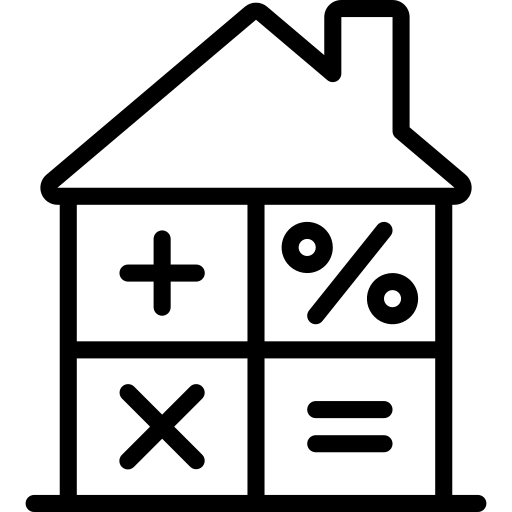Refinance Guide
Getting Ready to Refinance
——- 1 ——-
Getting Ready to Refinance
——- 2 ——-
Exploring Your Refinance Options
——- 3 ——-
Applying to Refinance
——- 4 ——-
Appraisals and Underwriting
——- 5 ——-
Closing Your Refinance
——- 6 ——-
Managing Your Mortgage Payments
Reasons to Refinance
The most vital phase in concluding whether you ought to renegotiate is to lay out your objectives. The most well-known purposes behind renegotiating a home loan are to take cash out, get a lower installment or abbreviate your home loan term.
Take Cash Out
Renegotiating your home loan is an extraordinary method for utilizing the value you have in your home. With a money out renegotiate, you renegotiate for a higher credit sum than what you owe and take the distinction. Any returns you get are tax-exempt.
Numerous mortgage holders use cash from their home to take care of exorbitant premium charge card obligation and understudy loan obligation. You can likewise bring cash out to fund back home enhancements, instruction or anything that you really want. Since contract financing costs are normally lower than loan fees on different obligations, a money out renegotiate can be an incredible method for solidifying or pay off obligation. Furthermore, contract interest is charge deductible, yet the interest on different obligations generally isn’t.
You might have the option to take cash from your home assuming that you’ve been paying on the advance to the point of developing value. Furthermore, you might have the option to do a money out renegotiate on the off chance that your property estimation has expanded; a higher worth on your home method your loan specialist can give you more cash to back it.
Get a Lower Payment
A lower contract installment implies more space in your financial plan for different things. There are a couple of ways you can bring down your installment by renegotiating.
In the first place, you might have the option to renegotiate with a lower rate. Assuming that rates currently are lower than they were the point at which you purchased your house, it merits conversing with your bank to see what your financing cost could be. Getting a lower rate implies bringing down the premium piece of your regularly scheduled installment – and large premium reserve funds over the long haul.
Second, you could renegotiate to dispose of home loan protection – a month to month expense you pay to safeguard your moneylender if you default on the credit. Contract protection is typically possibly required when you put down under 20%. You could save many dollars a month by renegotiating to quit paying month to month contract protection.
Third, you can get a lower installment by changing your home loan term. Extending your term loosens up your installments over additional years, which makes every installment more modest.
There might be alternate ways you can get a lower installment, so it’s dependably worth checking with your moneylender to perceive how they can assist you with getting an installment that accommodates your ongoing financial plan.
Shorten Your Mortgage Term
Shortening your mortgage term is a great way to save money on interest. Often, shortening your term means you’ll receive a better interest rate. A better interest rate and fewer years of payments mean big interest savings in the long run.
So how does this work? Let’s look at an example. Say your loan amount is $200,000. If you got a 30-year loan with a 3.5% interest rate, you would pay approximately $123,000 in interest over the life of the loan. However, if you cut your term in half, you would pay about $57,000 in interest over the life of the loan. That’s a difference of $66,000 – and it doesn’t even account for the fact that the shorter term would provide you with a lower interest rate (and more savings).
An important thing to know about shortening your term is that it may increase your monthly mortgage payment. However, less of your payment will go toward interest, and more of it will go toward paying down your loan balance. This allows you to build equity and pay off your home faster.
How long should I own my home before refinancing?
In most cases, you’ll need to be in your current home for at least a year before getting a significant financial benefit from refinancing.
Things You Need to Evaluate Before Refinancing
When you have an unmistakable objective as a main priority, you’ll need to assess what is happening. There are four keys things to check out: your financial assessment, your month to month contract installment, the worth of your home and your relationship of debt to salary after taxes (DTI).
Your Credit Score
There are many online resources that make it easy for you to find out your credit score for free. Knowing your credit score will help you understand what mortgage refinance options you could be eligible for.
Your Monthly Mortgage Payment
Knowing how your month to month contract installment squeezes into your spending plan will assist you with assessing your choices. In the event that you’re taking money out or shortening your term, for example, it’s smart to realize how much space for error you have in your financial plan for a higher regularly scheduled installment. In the event that you want to get a lower regularly scheduled installment, it’s vital to conclude the amount you want to bring down your installment for the renegotiate to be beneficial.
The Value of Your Home
Before you renegotiate, you’ll believe that should do a touch of exploration to gauge how much your home is worth. Your bank can’t loan you more than the house is worth, so an evaluation esteem that returns lower than anticipated can affect your capacity to renegotiate – particularly assuming you’re hoping to take cash out or eliminate contract protection.
The most ideal way to appraise your home estimation is to check the deal costs of comparative homes close to you. The later the deal, the better.
Knowing the worth of your home can let you know the amount of value you possess. To sort this out, simply deduct your ongoing home loan balance from the assessed worth of your home.
Your Debt-to-Income Ratio
One more variable to think about is your DTI. DTI is all your month to month obligation installments partitioned by your gross month to month pay. DTI is one way loan specialists measure your capacity to reimburse the cash you’re acquiring.
On the off chance that you were paying $1,000 every month for your home loan and another $500 until the end of your obligations, (for example, Mastercard obligation, car credits and understudy loans), your month to month obligations would approach $1,500. In the event that your gross month to month pay was $4,500, your DTI proportion would be 33%.
Most banks require a DTI of half or lower, and the greatest DTI shifts by the kind of credit you get. A DTI that is too high could influence your capacity to renegotiate or restrict your renegotiate choices.

Refinance Calculator
Get advance choices at the present loan costs that show what your new regularly scheduled installment could be. Answer a couple of basic inquiries.
